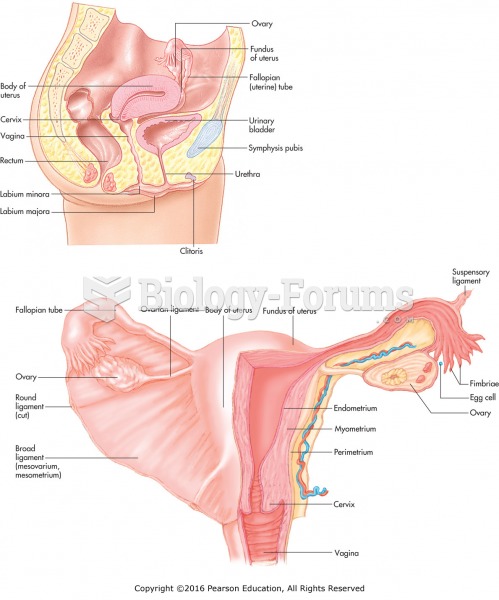Answer to Question 1
D
Feedback
A Incorrect. Restraining one side creates a potential threat from the other arm to the integrity of the IV, but bilateral restraints can be justified for the protection of the IV site. However, as a first step, padding the arm is a better preventive measure because the padding allows from some movement and prevents the pa-tient from manipulating the IV site.
B Incorrect. Administration of an antipsychotic agent can be justified for agitation but is not in this case, because less intrusive measures are available for initial protective measures.
C Incorrect. Although nurses tend to keep the doors of patients' and residents' rooms slightly ajar to maintain privacy, closing this woman's door is contrain-dicated to control noise because it can contribute to the risk of falls and injury and does nothing to maintain the integrity of the IV.
D Correct. To help maintain her independence and permit the administration of IV fluids yet provide safe, effective care, the nurse protects the IV insertion site with thick padding. This will prevent flexion at the elbow and wrist but allow free movement at the shoulder. Also, padding the IV site protects it against bumps from her movements and prevents manipulation of the IV by her other hand.
Answer to Question 2
B
Standard diabetic therapy includes diet, hypoglycemic agents, and exercise. If one aspect of the therapy changes, then the other two aspects must be adjusted to avoid hyperglycemia. Improving glucose metabolism is a huge benefit of exercise for the person with diabetes. In all people, exer-cise helps maintain aerobic conditioning, stabilizes mood, improves the quality of sleep, and is especially important for those with diabetes to promote and maintain collateral circulation. For this resident, a slow decline in physical activity will necessitate a change in the amount of insulin given or the total amount of daily calories to prevent hyperglycemia; however, the best solution for this resident is to increase daily physical activity. A new event is likely to cause an abrupt change in the serum glucose. Although infections are frequently detected in an individual with diabetes, infections are more closely associated with sudden-onset hyperglycemia. A sudden in-crease in caloric intake is likely to cause a sudden increase in blood glucose. A big change in medication use is likely to cause an abrupt change in the serum glucose.







